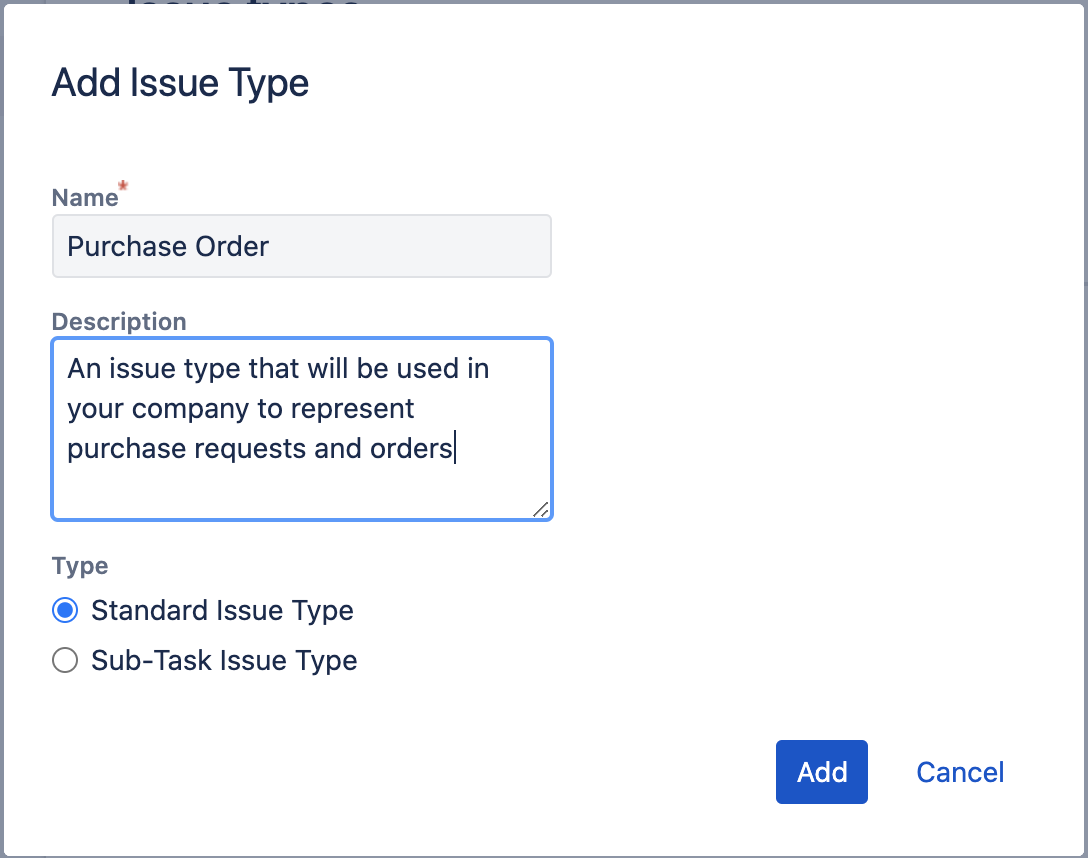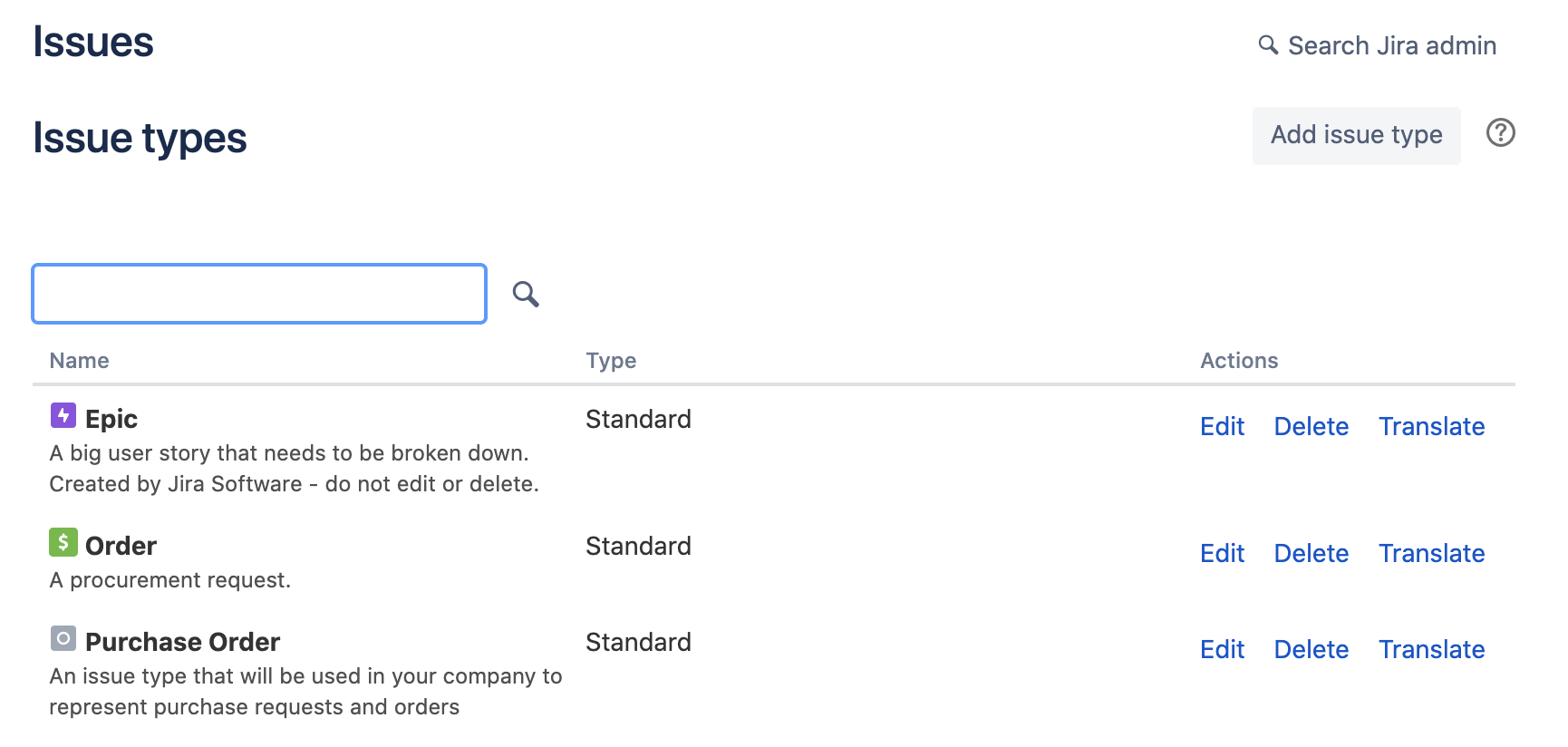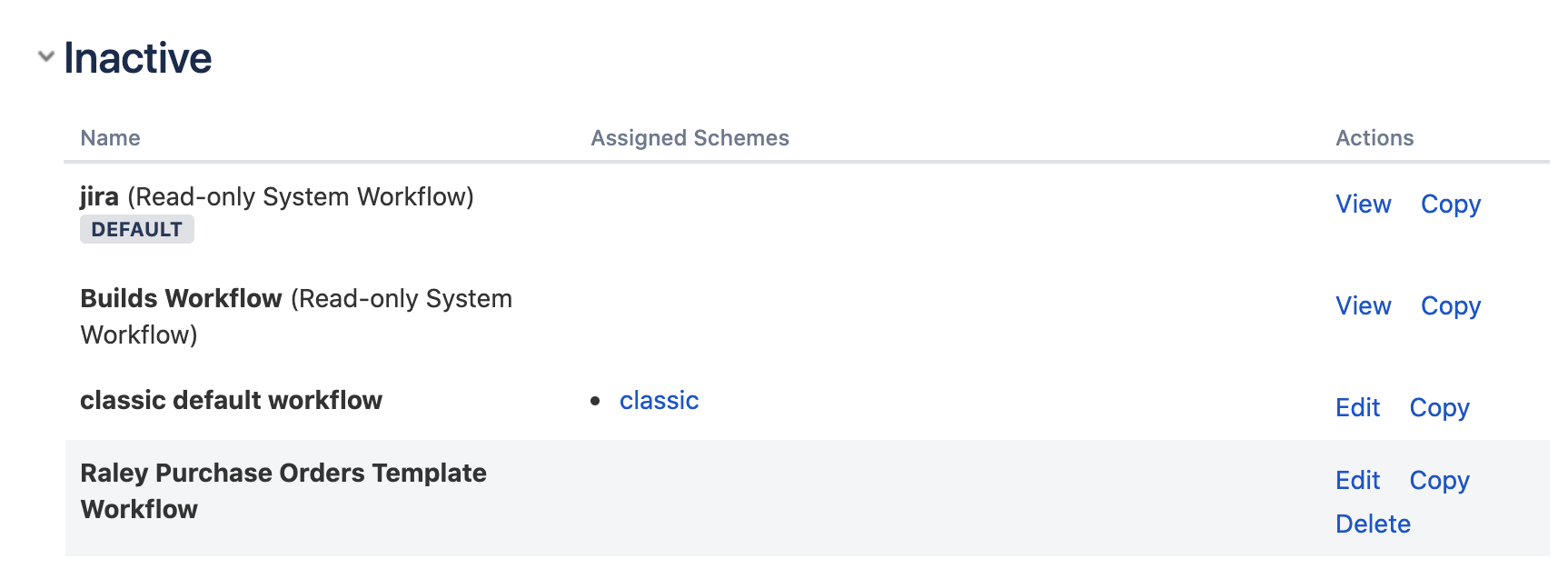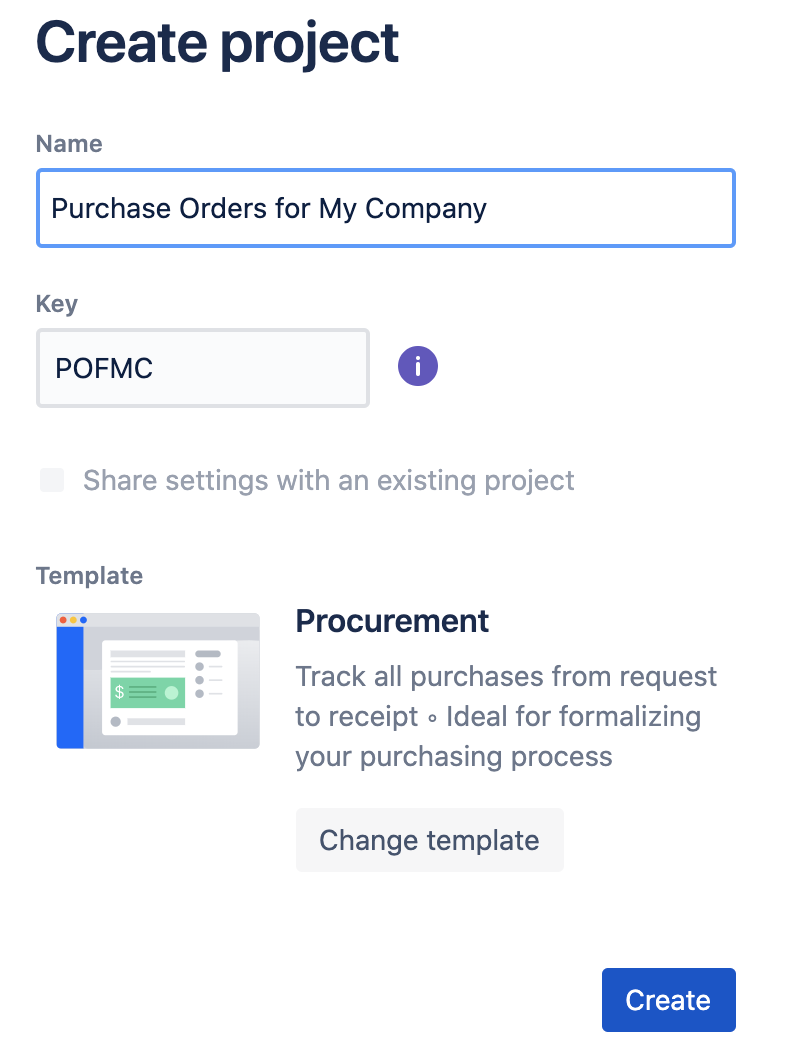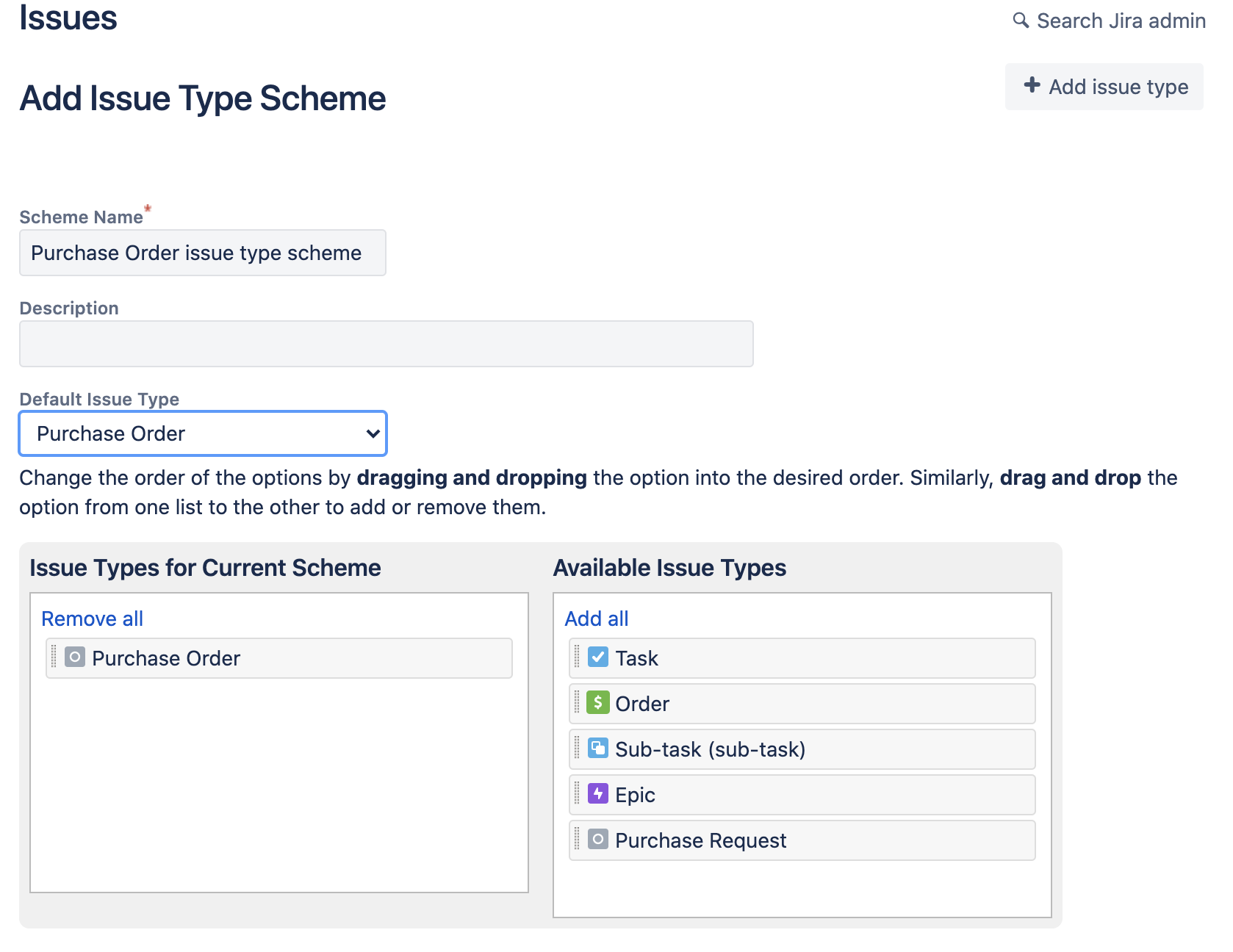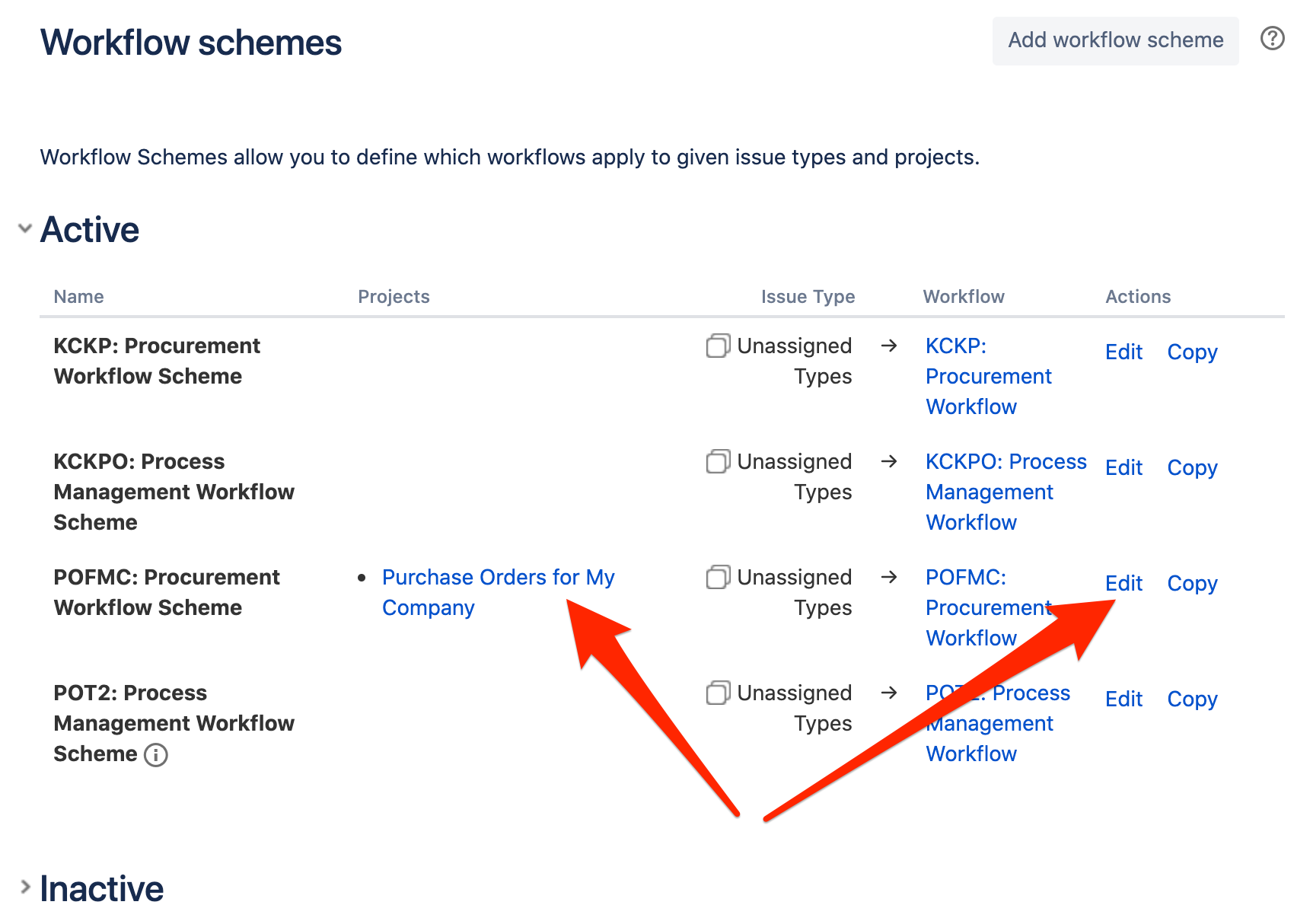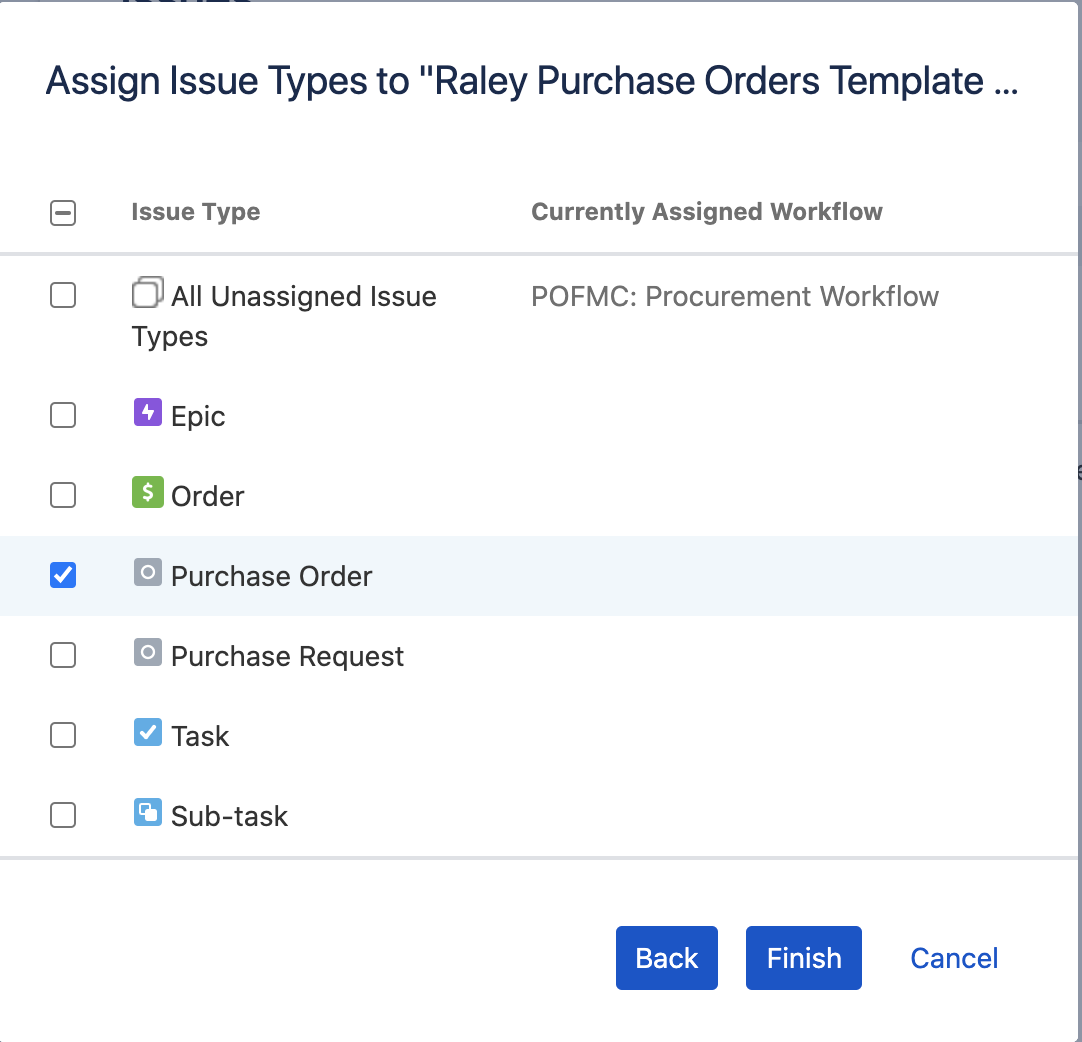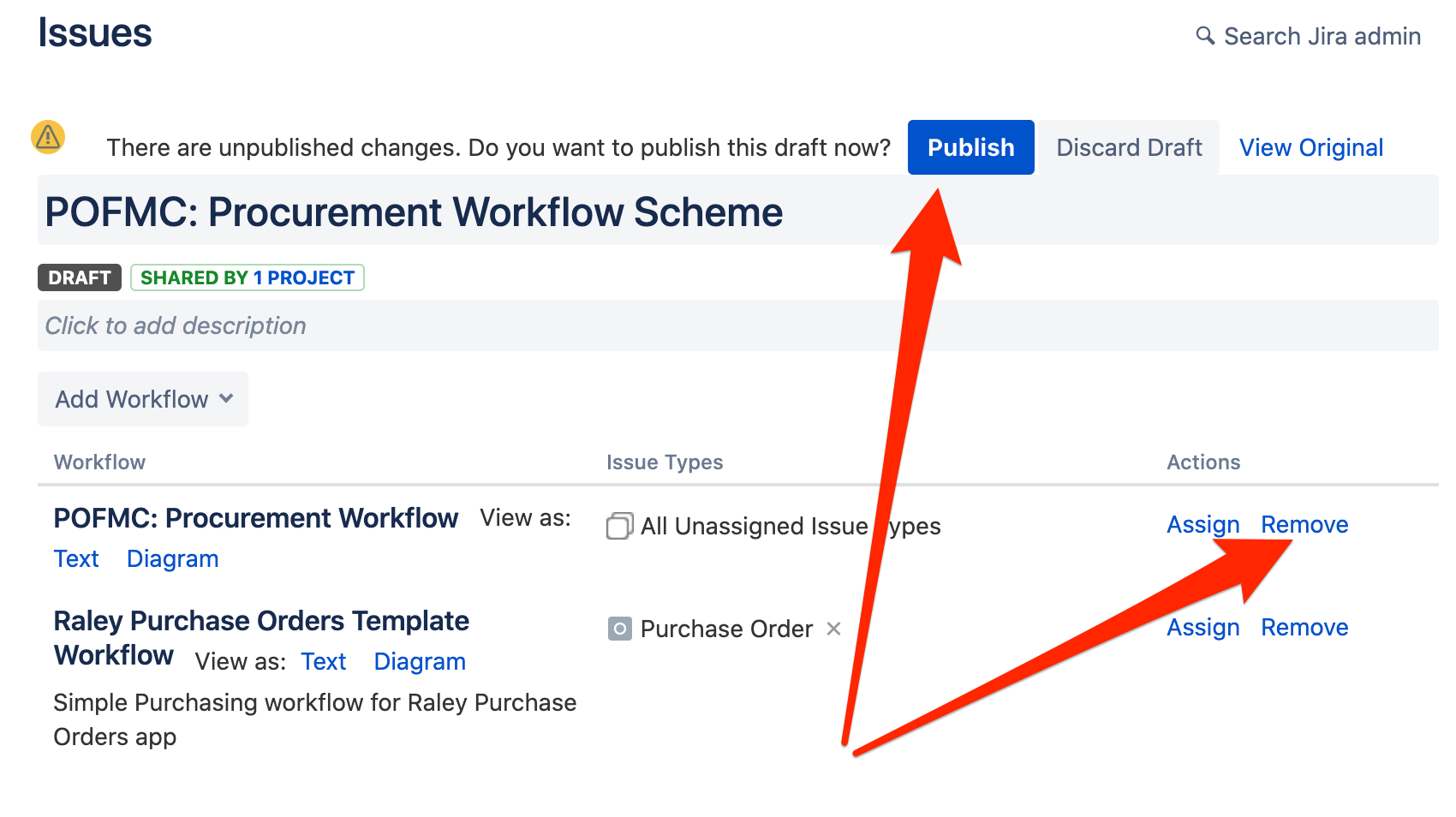Page History
...
If you haven't used the RPO before or would like to start from the beginning then follow the steps in this article.
- Create a new Jira issue type that will represent your Purchasing Orders. Note, that your issue type must be Standard issue type, not subtask.
Your newly added issue type "Purchase Order" will appear under list of Jira issue types:
2. Import "Raley Purchase Orders template workflow" from Atlassian marketplace. It should appear in the list of inactive workflows of your Jira:
3. Create a new Jira
...
Core project based on Business template Procurement like the following:
4. Go to Project Settings of your newly created project. Open link "Issue type schemes" and click on the button "Add issue type scheme" in the top right. Make sure that you have your newly added issue type listed in "Issue types for current scheme window" and that it is also set as Default issue type.
5. In the Project Settings click on Workflow schemes link. Choose the Workflow scheme corresponding to your project and click on link Edit as shown below:
Click on button Add workflow → Add existing and choose "Raley Purchase Orders Template workflow".
Click Next. In the following screen:
Choose your issue type added in p1 and click Finish.
You'll be presented with list of the workflows configured for your project. Remove the previously active workflow (if any) as shown on the screenshot below:
and click on Publish button.
Associate your new issue type with the project created in (2)
- Create a Jira workflow that will represent your purchasing order process in your organisation. We recommend to download our template workflow from Atlassian Marketplace. Search for "Raley Purchase Orders template workflow" install it into your Jira instance and customise as per your need. Your resulting workflow must meet the following requirements:
- There are 4 mandatory statuses:
- Initial (draft)
- Submitted for approval
- Order Approved
- Order Rejected
- There're 3 mandatory transitions:
- Draft → Submitted for approval
- Submitted for approval → Approved
- Submitted for approval → Rejected
- Submitted for approval → Approved AND Submitted for approval → Rejected transitions must be configured as hidden from user condition. See Conditions / Optional conditions/ Hide From User Condition on https://confluence.atlassian.com/adminjiracloud/advanced-workflow-configuration-776636620.html#Advancedworkflowconfiguration-conditions
- There are 4 mandatory statuses:
- Navigate to your Jira Universal Plugin Manager, choose Raley Purchase Orders and click on Configure button.
- In Jira config tab assign the following:
- Purchase Orders project - the project that you've created in step (2)
- Purchase Orders issue type - the issue type you've created in step (1)
- Initial (draft) status - The initial status in which issues in your projects are created.
- Submitted for approval status - The status where a team member will transit the Jira ticket once they've specified all the data needed for the order (order lines and approvers)
- Order approved status - The status where Raley Purchase Orders app will transit a ticket from "Submitted for approval status" if it was approved
- Order rejected status - The status where Raley Purchase Orders app will transit a ticket from "Submitted for approval status" if it was rejected
- Order paid status - A status in your Jira workflow that indicates that specific purchase order was paid. Not mandatory
- In Company tab assign the following
- Company name - name of your Company
- Country - your country
- State - your state
- In Departments tab - you define your company's organisational units and their details. At this point do not specify Employees for the department, as you will do that in the next step.
- In Employees tab - you configure your Jira users as company employees. One employee can be associated to 1..N departments and can also have multiple roles. If employee has Approval role then you should also provide his/her approval limit.
- In Jira config tab assign the following:
...
